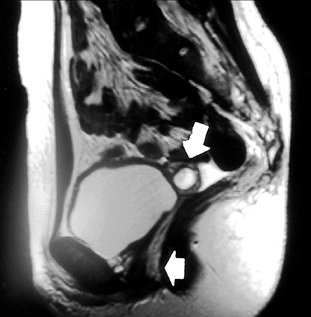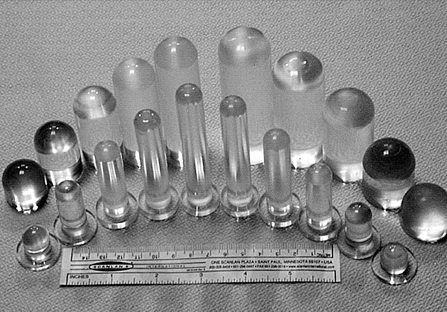Yonsei Med J.
2006 Dec;47(6):892-895. 10.3349/ymj.2006.47.6.892.
Non-surgical Treatment of Vaginal Agenesis Using a Simplified Version of Ingram's Method
- Affiliations
-
- 1Department of Obstetrics and Gynecology, Bundang CHA Hospital, Pochon CHA University, Gyeonggi-do, Korea. yeegen@cha.ac.kr
- KMID: 1777183
- DOI: http://doi.org/10.3349/ymj.2006.47.6.892
Abstract
- Non-surgical vaginal dilation is a safe and effective method for the creation of neovagina in the patient with vaginal agenesis. Compared to surgical methods, non-surgical vaginal dilation has the advantage of low morbidity, the creation of a more physiologic vaginal milieu, and no surgical scarring. To overcome some technical limitations of original Frank's method, in 1981 Ingram proposed a modification of the technique that used dilators of gradually increasing size mounted on a bicycle seat stool. Although several studies have shown satisfactory outcomes using Ingram's method, there are some practical difficulties in making and handling the bicycle seat stool. This article reports a case of a 24-year-old woman with Mayer-Rokitansky-Kster-Hauser syndrome whose vaginal agenesis is successfully treated with a simplified version of Ingram's method. This method uses dilators of gradually increasing size mounted on an ordinary chair instead of a bicycle seat stool. When necessary, the patient may use a fulcrum under the dilator.
Keyword
MeSH Terms
Figure
Reference
-
1. Evans TN, Poland ML, Boving RL. Vaginal malformations. Am J Obstet Gynecol. 1981. 141:910–920.2. Frank RT. The formation of an artificial vagina without operation. Am J Obstet Gynecol. 1938. 35:1053–1055.3. Roberts CP, Haber MJ, Rock JA. Vaginal creation for müllerian agenesis. Am J Obstet Gynecol. 2001. 185:1349–1352.4. Edmonds DK. Vaginal and uterine anomalies in the paediatric and adolescent patient. Curr Opin Obstet Gynecol. 2001. 13:463–467.5. Costa EM, Mendonca BB, Inacio M, Arnhold IJ, Silva FA, Lodovici O. Management of ambiguous genitalia in pseudohermaphrodites: new perspectives on vaginal dilation. Fertil Steril. 1997. 67:229–232.6. Ingram JM. The bicycle seat stool in the treatment of vaginal agenesis and stenosis: a preliminary report. Am J Obstet Gynecol. 1981. 140:867–873.7. Robson S, Oliver GD. Management of vaginal agenesis: review of 10 years practice at a tertiary referral centre. Aust NZ J Obstet Gynaecol. 2000. 40:430–433.8. Lappöhn RE. Congenital absence of the vagina - results of conservative treatment. Eur J Obstet Gynecol Reprod Biol. 1995. 59:183–186.9. Rock JA, Reeves LA, Retto H, Baramki TA, Zacur HA, Jones HW Jr. Success following vaginal creation for Müllerian agenesis. Fertil Steril. 1983. 39:809–813.
- Full Text Links
- Actions
-
Cited
- CITED
-
- Close
- Share
- Similar articles
-
- Two Cases of Mullerian Agenesis Undergone Vaginal Reconstruction by McIndoe Technique
- Complete septate uterus, obstructed hemivagina, and ipsilateral adnexal and renal agenesis in pregnancy
- 2 Cases of Uterus Didelphys with Unilateral Obstructed Hemivagina and Ipsilateral Renal Agenesis
- A Case of Mayer-Rokitansky-K ster-Hauser Syndrome combined with Unilateral Renal Agenesis and Pelvic Cystic Mass in Child
- Congenital uterovaginal abnormalities, it’s embryogenesis, surgical management and clinical implications




